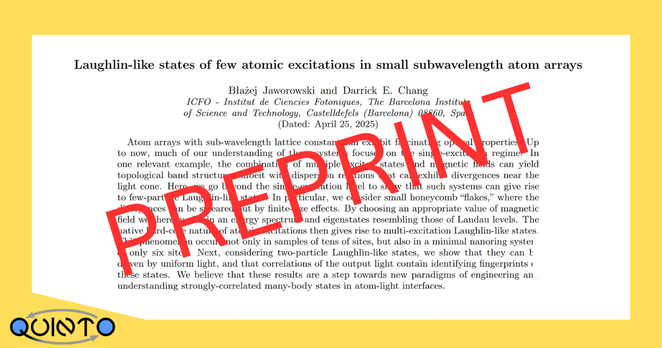We just submitted the first QUINTO draft of paper to a journal. Let's see what the editors and reviewers think.
The paper is about fractional quantum Hall states in atomic arrays. Here is the popular summary we submitted alongside:
"When atoms are arranged in a regular, dense array, their response to light can change drastically. The photons can bounce between the atoms, getting absorbed and re-emitted again and interfering with themselves. This field of quantum optics with atomic arrays is of active interest. Due to interactions, the limit of many absorbed photons generally remains hard to model, but at the same time may result in new, counterintuitive physical phenomena. In the search for ways to understand such systems, we can look for analogies in condensed matter physics, where the behavior of many interacting particles (electrons in this case) has been studied for decades. Here, we report on finding such an analogy between the behavior of few photons absorbed by an array and peculiar many-electron quantum states known as fractional quantum Hall (FQH) states. FQH states display many counterintuitive properties -- for example the electrons behave like they decomposed into pieces (e.g. "one third of an electron"), even though we know that in reality they are indivisible. Now we know that photons in arrays can behave similarly."
[1/2]
#physics #science #CondensedMatterPhysics #CondensedMatter #condMat #QuantumOptics #Quantum @physics

